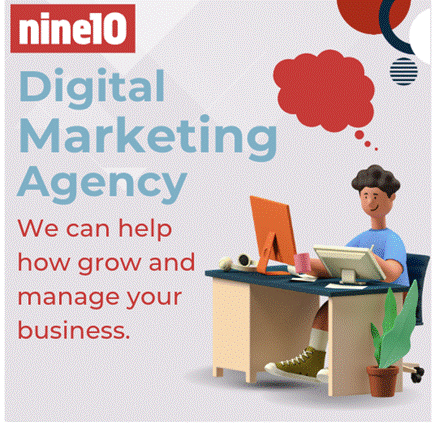Written by Meghan Jobson, Nine10
Graphic design is more than making things “look pretty.” It’s about communication, clarity, and helping your audience take action. While art is created for expression, graphic design has a purpose: to support marketing and business goals through visuals.
If you’re a business owner or marketer creating your own materials, here’s what you need to know about effective design, when to DIY, and when to call in a professional.
What Graphic Design Is (and Isn’t)
The biggest difference between art and graphic design is intent.
- Art doesn’t follow strict rules and is often about personal or cultural expression.
- Graphic design is functional. It’s about solving problems and guiding your audience toward a specific action.
That’s why some projects should always be handled by professionals, including:
- Logos and brand identities
- Visual branding systems
- High-impact print materials (large signage, trade show displays, etc.)
For everyday marketing materials like social media graphics, ads, or presentations, however, you can use accessible tools like Canva or Adobe Express to create polished, on-brand visuals.
Tools to Use as a Non-Designer
- Canva (our preferred tool): Easy templates, drag-and-drop design, and brand kits.
- Adobe Express: A good alternative for quick visuals.
- AI tools: Emerging options can help with templates, resizing, or brainstorming design ideas.
Tools to Avoid for DIY Marketing Graphics
Unless you are a seasoned pro, advanced self-learner, or comfortable and familiar with the adobe suite, Adobe Illustrator and InDesign should be left to the professionals.
These are powerful professional programs that require a niche skillset to use effectively and efficiently. While they absolutely have an expanded suite of tools and functionality, they’re expensive, complex, and offer far more options than you’ll ever need for basic marketing graphics.
The ABCs of Good Graphic Design
To keep your visuals effective and professional, use the ABC framework:
A – Apparent
Your message should be crystal clear.
- Use a strong visual hierarchy (headlines, icons, images) to guide the eye.
- Pick typography that’s legible at any size.
- Always include a call to action, give your viewer something to do.
B – Balanced
Good design balances simplicity with structure.
- Use layers (background, text, visuals) thoughtfully.
- Take advantage of “white space” (blank space on your graphic) to let your content, and your viewer, breathe.
- Keep margins consistent and align elements neatly.
- In most cases, less is more. Don’t overload your designs.
C – Consistent
Consistency builds trust.
- Stick to your brand. Stay consistent with colours, fonts, logos, and photography style.
- Maintain tone and design style across all channels.
- Re-use templates and AI helpers to keep your content aligned. Even if you get bored, your audience won’t!
- Avoiding “Brand Drift” will help you maintain your audiences trust and brand recognition.
A Tale of Two Designs: Why It Matters
Let’s compare two real-world examples.
Example 1: Cuppie Cakes
- Version A: Too much information, hard-to-read text, clashing colours, no clear margins, and no brand consistency.

- Version B: Clean, simple, with a clear message. The focal point (the cupcake) matches the offer. Text is minimal, and the design aligns with the brand.

Example 2: Nine10 Marketing
- Version A: No clear message, crowded design, brand inconsistency, and missing calls to action.

- Version B: Aligned with brand identity, more space, clear headline, CTA, and real images of team members—making it trustworthy and approachable.
The difference? Good design communicates. Bad design confuses.
When to DIY and When to Hire a Designer
As much as you can, and should do yourself, there are always things you would be better off hiring a professional for. Here’s what you should and shouldn’t do yourself!
- DIY: Everyday posts, quick promotions, or simple infographics using Canva or templates.
- Hire a professional: Logo design, full brand identity,, or complex print projects.
By knowing when to do it yourself and when to bring in a professional, you ensure your visuals always support your goals without wasting time or money.



